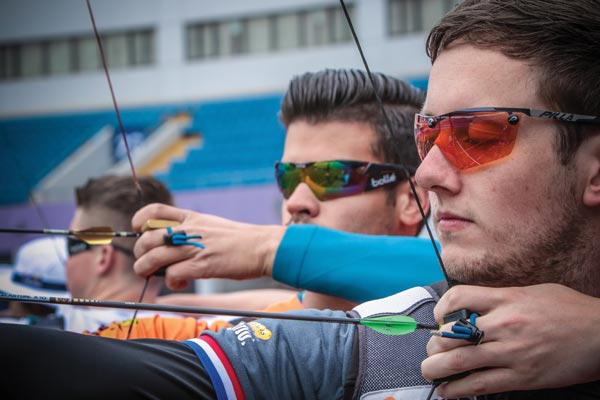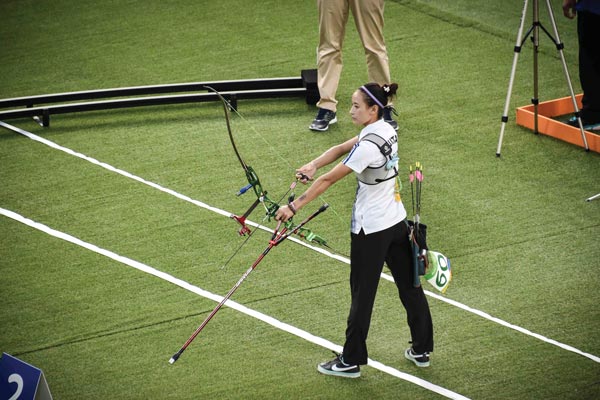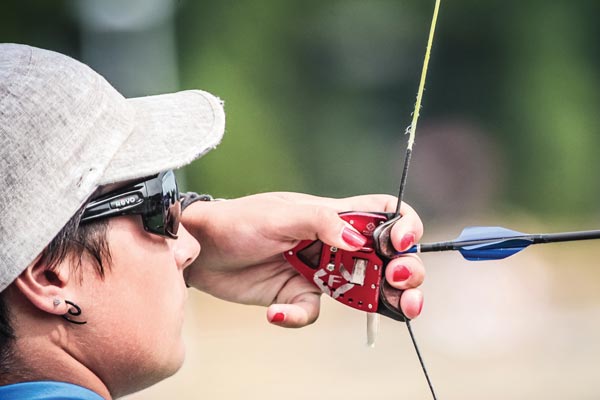John Stanley explores the concept of mindfulness, and finds that it’s linked to archery in more ways than just as a tool for improvement

Mindfulness isn’t a goal in itself. It involves paying attention to lived experiences in a non-judgemental way
What is mindfulness, and how can it help your shooting? Mindfulness is a state of awareness, derived from ancient Buddhist philosophies, that has gradually become widespread in the 21st century in many secular fields including self-help, clinical practice, and therapy.
Mindfulness isn’t a goal in itself. It involves paying attention to lived experiences in a non-judgemental way. Essentially, it encourages you to focus on the present, rather than on past or future anxieties. Together with associated meditation practices, mindfulness promises to help you live a calmer, less-stressed, physically healthier and emotionally stronger life.
It’s become a minor industry. A brief search on Amazon reveals hundreds of titles published in the last 10 years on mindfulness at home, at work, for weight loss, for families, and almost every other imaginable situation. Mindfulness is even being considered as part of national health policy after promising clinical trials in the field of mental health. It’s perhaps unsurprising that its recent rise has coincided with the internet age, as it also appears to offer an escape route from the digital distractions of modern life.
If you’re completely new to mindfulness, the exercise most beginners try is the ‘mindful walk’. This involves walking a familiar or unfamiliar route and trying to maintain awareness of everything that happens along the way: the crunch of your feet on gravel, the feel of the air on your skin, the sound of the birds in the trees, and so on. Ideally, you will experience the sensations without judgement and give the mind a break from the constant rattle of thoughts about the past and future.

John used the Headspace app for three weeks to help practice mindfulness
In theory, you can approach almost anything mindfully, from making a cup of tea to doing your tax return, but some areas of life benefit more deeply. Mindfulness and meditation have long been part of elite sport practice, and archery is no exception. The USA Archery training resource book specifically encourages cultivating mindfulness. Several national teams (such as Bhutan, for example) incorporate meditation into their training program – as, is rumoured, do the Koreans.
You may have heard that you should concentrate on the process of shooting rather than the outcome, a philosophy which is distinctly mindful. The USA’s head coach Kisik Lee discusses mindful shooting in a baroque section of his well-known book Inside The Archer:
“In a twelve arrow match, each arrow means something different. It is true that the first arrows score the same as the last, but the closer he gets to shooting the arrow that sets a world record, the more the archer’s heart swells… The last arrow to win the match feels immeasurably harder than the first few easy tens. The moment the archer shoots from a place of need – “I need to make a good shot on this last arrow to win” – he has spelled doom for himself. Is it not true that he needed the first arrows just as much? The simple truth is that… the archer who shoots to make his physical expression beautiful is very different from the archer who shoots to hit the center of the target.”
We have all seen form crumble under pressure in a crucial end or a shoot-off, and many of us have done it ourselves. Looking for answers, I spoke to US archer Madeline Penn, who had mentioned mindful archery on her blog page. “A mindful arrow, to me, has purpose.” she said. “I focus on the quality of the arrows over their quantity. When I take my time and focus on one aspect of the shot sequence I generally have more centered shots and tighter groups… 100 quality shots, where I have a focus and a goal, are more valuable to me than 200 shots where I don’t think about the process. I want to do all the thinking in practice, so when I compete and have tunnel vision my muscle memory kicks in.”

Bhutan is one national team that incorporates meditation into its archery training programme
This approach may be familiar to you. Indeed, as I learned more about the topic, it became increasingly clear that archery is in itself is a mindful practice. When you are absolutely focused on making the shot, the feel of draw, anchor and release, the bow becoming an extension of your physical body – you are practicing mindfulness, whether you know it or not. Many of the psychological benefits of an archery session – clarity of mind, relaxation and so on – are identical to the purported benefits of mindfulness. Quite simply, they are the same thing.
Mindfulness also teaches that life can be lived in a sense-focused ‘being’ mode or an analytical ‘doing’ mode; and that these days most of us are stuck in the latter. The ‘doing’ mode is essential to solving external problems (and probably human evolution), but is less good for solving internal, personal conundrums – or finding happiness. Archery has a ‘being’ mode – the physical expression of shooting a bow – and the ‘doing’ mode: the scoring, sporting, competitive and technical sides. It is, of course, easy to switch instantly from one mode to another; usually at the wrong moment, which causes tension and ultimately failure.
Mindfulness in archery perhaps finds its ultimate expression in kyudo, one of the traditional martial arts of Japan. Kyudo means “the way of the bow”, and mixes religious and military traditions with Eastern philosophy into a deeply meditative, ritualistic practice, closer to an art than a sport. What matters is the perfect shot, not where the arrow ends up.
Taking all this into account, I decided to see what mindfulness could do for my shooting. Over three weeks I used the Headspace app (downloadable for iOS & Android) and two exercises which you should be able to find with a quick Google: ‘mindful breathing’, and ‘mindful listening’, the latter to music I’d never heard before. I mostly succeeded in doing these exercises every single day. At first, I found my thoughts wandering all over the place; the idea is to gently bring them back to the experience at hand. It took some time to get over the feelings of ‘my brain isn’t cut out for this’, but eventually I started to look forward to the exercises, and even managed to meditate, albeit briefly, on a crowded train.

Mindfulness teaches that life can be lived in a sense-focused ‘being’ mode or an analytical ‘doing’ mode; and that these days most of us are stuck in the latter
I also decided to try and mindfully do one archery-specific activity: putting the bow together. Every time I shot, I tried to become fully aware of the way the parts snap into place, the wobble on the bowstand, the slow, careful construction of something out of its component parts. I approached my warm-up exercises the same way, and found this was very successful at setting up a strong practice session.
So what happened after three weeks of mindfulness practice? I can’t certify the results as scientific, but the biggest change was that I found my ability to ‘hold focus’ at all tasks, including shooting, improved a great deal. I could shoot on point more solidly, for longer, and with far fewer wild arrows. It didn’t work miracles, and I’m still working on a backlog of mental and physical niggles, but it definitely enabled me to stay ‘in the zone’ for longer. I began to look forward to working on problems rather than just hoping for a good session, with a sense of increased control.
The other noticeable benefit appeared to be an improvement in sleep, which of course improves everything in life. I’m enjoying shooting more, which in turn makes me happier and more mindful, which in turn improves my shooting. Needless to say, this is a win/win situation. Given the ease and lack of expense in getting started with mindfulness, I have to recommend giving it a try. But picking up a bow and shooting strongly might just be the most mindful thing you can do today.
This article originally appeared in the issue 115 of Bow International magazine. For more great content like this, subscribe today at our secure online store www.myfavouritemagazines.co.uk

